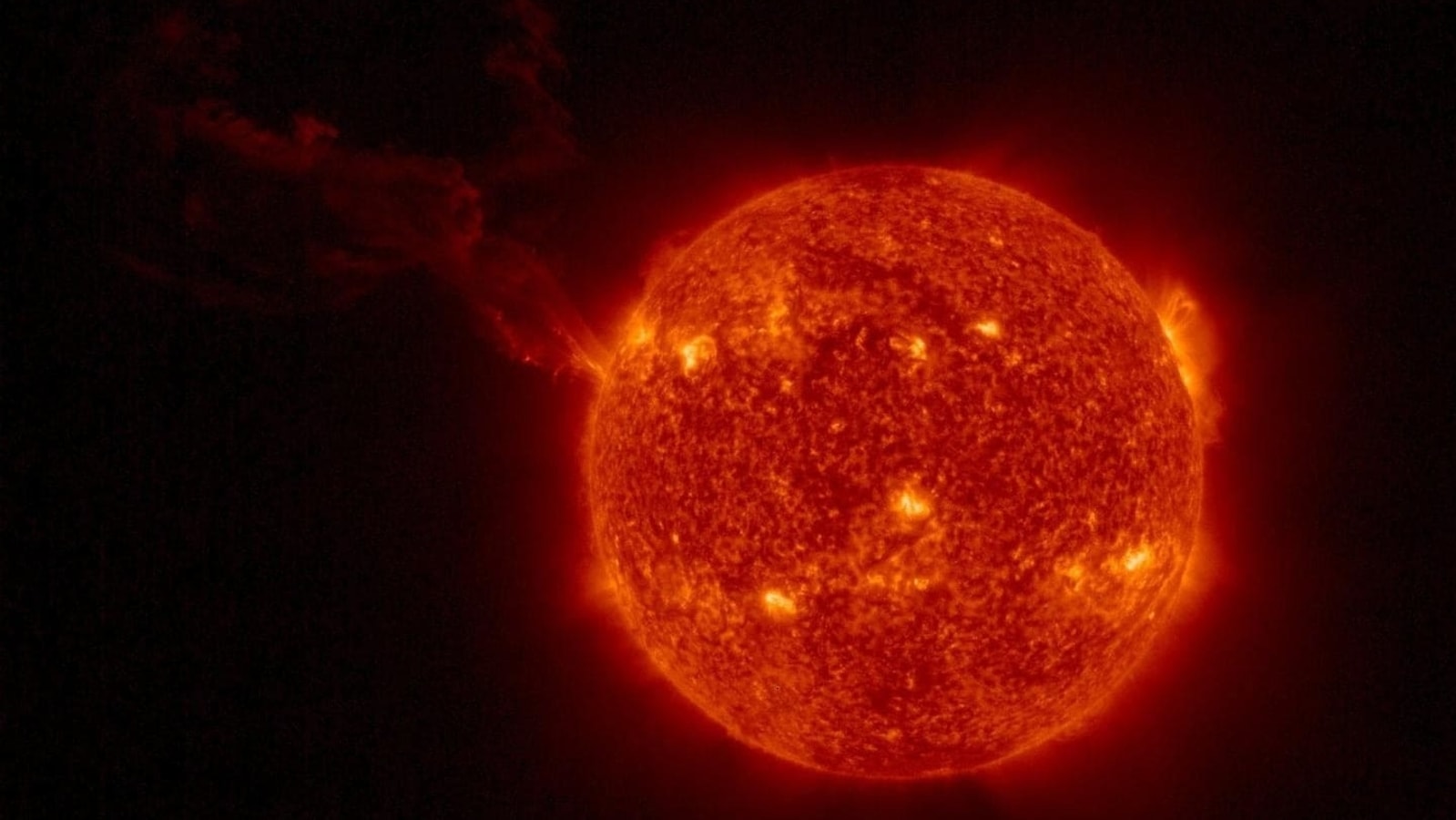Solar storm WARNING! Fast moving solar winds zooming towards Earth; Know when it will strike
According to reports, a solar storm is set to strike the Earth over the weekend of November 19-20. Know the dangers from the impact of this solar disturbance.






 View all Images
View all ImagesThe Earth is constantly battling the radiation and the attacks on its magnetic field coming from the Sun, but lately it has turned from bad to quite worse. After escaping from a potential G5-class solar storm event from an unstable sunspot recently, now another danger is coming for the Earth. A hole has emerged on the southern hemisphere of the Sun, which is releasing a high-energy stream of plasma. This stream of plasma, also known as fast-moving solar winds, are expected to hit the Earth later this week and cause a powerful solar storm. Read on to know the consequences of this solar disturbance.
The development was reported by SpaceWeather.com which noted on its website, “A fast-moving stream of solar wind is expected to hit Earth's magnetic field on Nov. 19th or 20th. It is flowing from a southern hole in the sun's atmosphere. High-latitude sky watchers should be alert for auroras at the end of this week”.
Dangerous solar storm brewing for the weekend
While the website only spoke about auroras, the incoming solar storm is capable of much worse. While it is not possible to gauge how powerful the incoming solar storm can be, it is likely that it will not be a very intense storm. However, it is still capable of causing disruption in radio waves and cause a radio blackout. This can also impact GPS systems. As a result, flight timings can be delayed and ship transportation can be affected. If you are in the affected zone (which you can find out closer to the weekend on the National Oceanic and Atmospheric Administration website), you should check if any of your flights have been rescheduled.
While this solar storm may not be a strong one, the threat of a G5-class solar storm has not entirely gone. The Sun is still reaching the peak of its solar cycle and the intensity and frequency of solar storms are only about to get much worse. In case you're wondering how it may impact you, you should know that such solar disturbances can damage satellites, impact mobile networks and internet connectivity as well as cause power grid failure. Although humans will not be directly impacted by the radiation, due to disruptions to emergency services and power outages at places of high importance, it can still cause a high number of deaths.
Catch all the Latest Tech News, Mobile News, Laptop News, Gaming news, Wearables News , How To News, also keep up with us on Whatsapp channel,Twitter, Facebook, Google News, and Instagram. For our latest videos, subscribe to our YouTube channel.




























